Flowers that reach for the sky have a heavenly way of lifting a garden.
Here are some of the best flower spires for gardens all around Australia.
I love growing towering flowers. Last year I fell for foxgloves; this year I’m in love with delphiniums and snapdragons. You can of course buy some of
these flowers as seedlings or potted plants, but the choice is so much better and the excitement so much greater when you grow them from seed. Our
go-to seed suppliers are Lambley Nursery and Tesselaar, but we have also been experimenting with importing seeds from the UK and the US. Try www.sarahraven.com
or www.floretflowers.com
If you too want giant flowers, here’s the secret: lots of high quality compost. Top-dress beds in spring and autumn with 10cm of compost. Add a healthy
dose of an organic granular fertiliser at planting time and if you can make – or beg from a friend - some compost tea or comfrey tea, apply it every
week either as a foliar spray or a root drench.
Enjoy your flowers in the garden, but also in the vase, where these towering spires lift the bunch - and the spirits.
Delphinium
aka Larkspur
Delphiniums offer early-blooming brilliance in cold climate gardens in colours of dark indigo, periwinkle, frosty blue, cobalt, pure while and bicolours.
Direct sow seed in late-autumn or early-spring, or sow indoors into seed trays and plant out after the last frost, but while the weather is still cool.
Speed up germination by chilling seed in a refrigerator or freezer for a week before sowing.
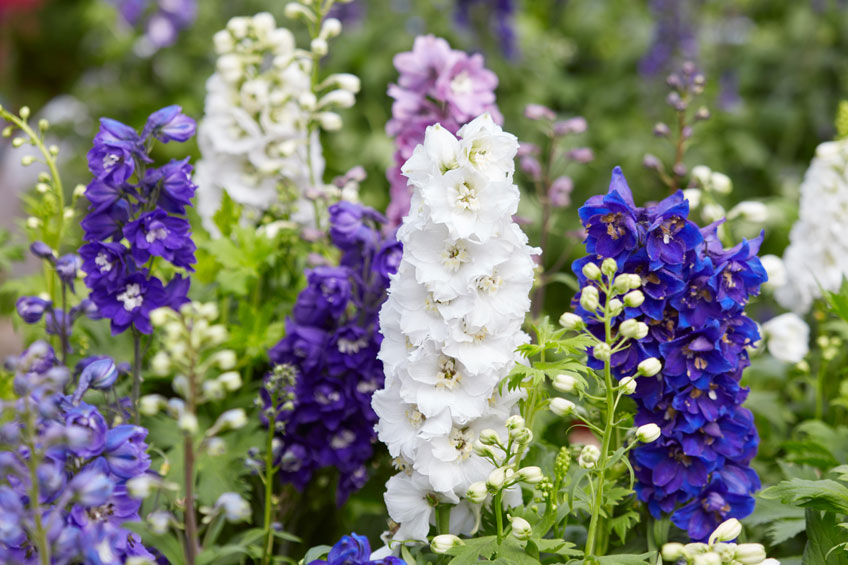
Larkspurs
Foxgloves
Digitalis
Two favourites include ‘Camelot Cream’ and ‘Dalmation Peach’, which, unlike the biennial types of foxglove bloom in their first year without any cold so
can be grown as an annual. Foxglove seeds are tiny and can be easily washed away by blasts of water so be sure to plant in pre-moistened seed-raising
or potting mix and bottom water to protect this precious seed.
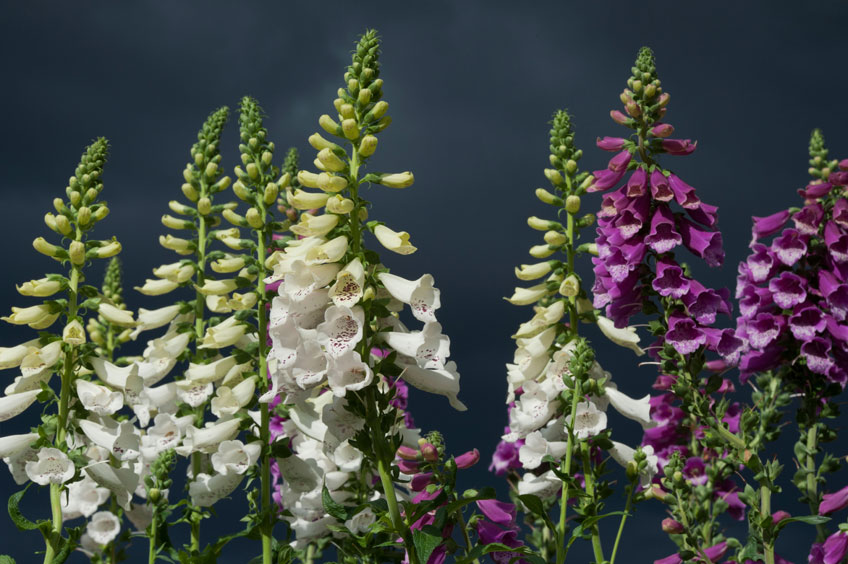
Foxgloves
Beardtongues
Penstemon hybrids
Penstemons are a warm-climate alternative to foxgloves, growing in hotter and drier areas than foxgloves will. They are perennials so don’t need to be
replanted, just pruned and fed for constant reflowering. Deadhead the flower spikes to encourage repeat flowering, and resist cutting back the plant
until frosts have passed. Then, prune to about 20cm to encourage bushy growth and lots of summer flowers. Find them in pots in nurseries.
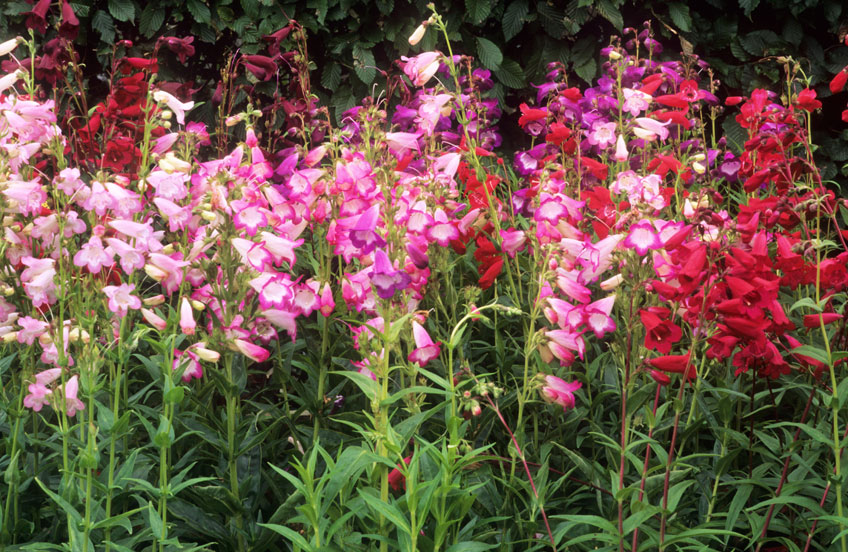
Penstamon
Hollyhocks
Alcea rosea
Sow hollyhocks where you want them. They will flower well the year after they are planted. They self-sow, usually popping up in the sunny, open front of
the bed. Dig up self-sown seedlings and pot them into small pots. Once the roots have filled it, move them on into a slim, deep pot to accommodate
the taproot before returning them to the rear of the bed.
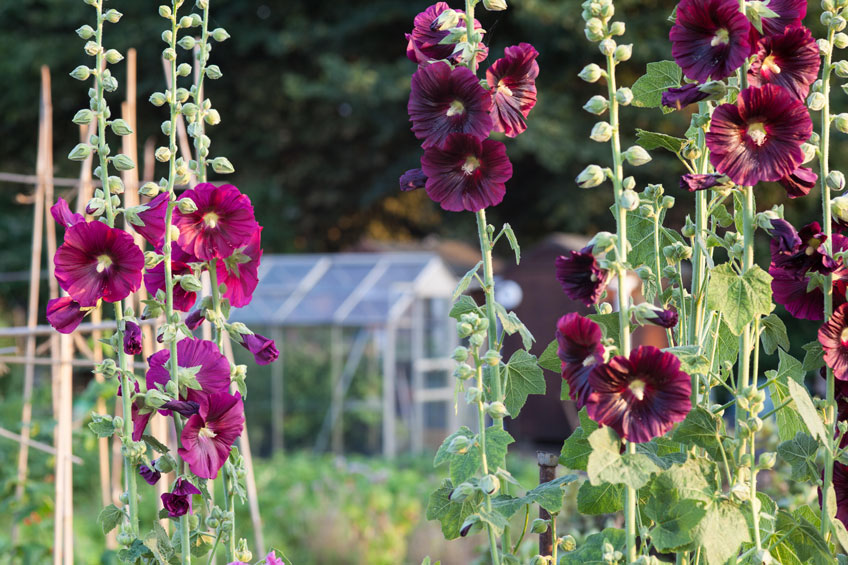
Hollyhocks
Snapdragons
Antirrhinum majus
‘Chantilly’ snapdragons are my new favourite – warm colours, strong stems, ruffled blooms and a lovely citus scent. Snapdragon seeds are easy to germinate
and grow, but the seeds are tiny so sowing them into seed raising trays takes a steady hand and a bit of patience. Be sure to barely cover them and
then bottom water until they are big enough to withstand an overhead drink.
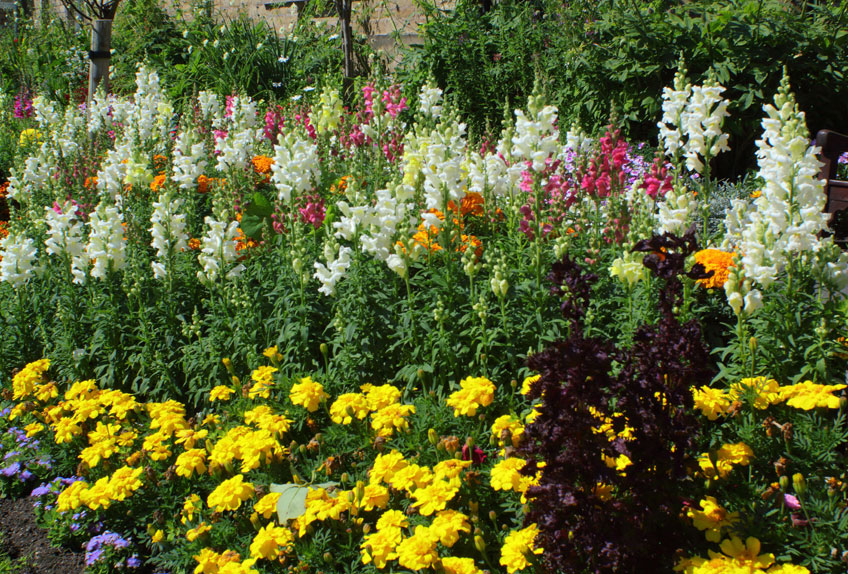
Snapdragons
Stock
Matthiola incana
These highly fragrant hardy annuals thrive in full sun in cooler weather. Sow into trays April for fluffy spires of clove-scented blooms in late winter
and early spring. Staking is required as flowers get top-heavy. Pick when one third of the flowers have opened on the spike. Flowers will last up to
ten days in a vase if the water is changed regularly.
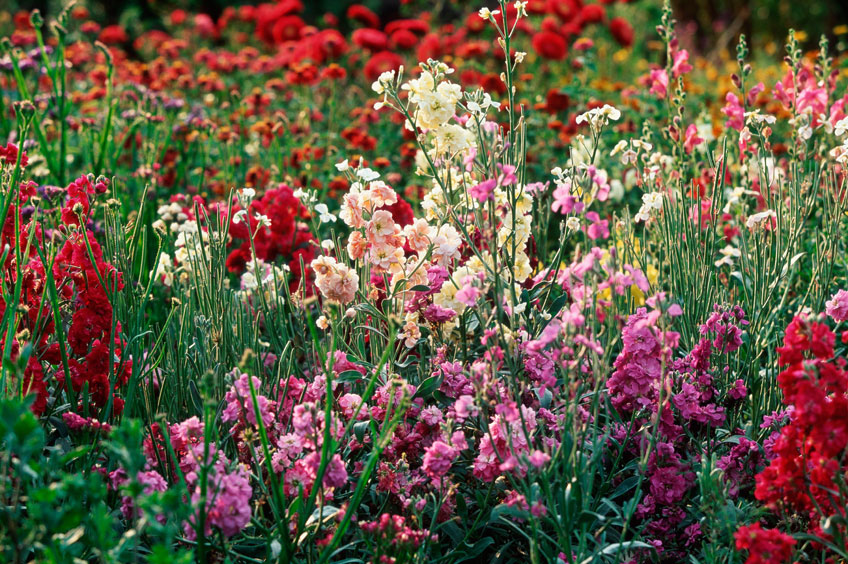
Stock